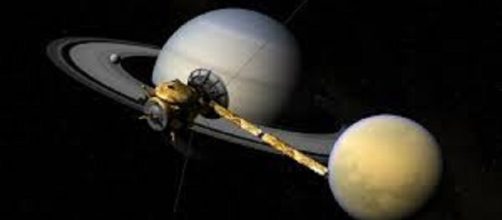The Cassini Spacecraft sent its final images to Earth as the probe plunged into Saturn’s rings. NASA's Cassini Saturn orbiter will jump into its grand finale after its two decades of space mission.
But until the very end, the probe did not fail to do its task. It sent the final images back to Earth, which was a proper coda for Cassini’s astoundingly diverse and breathtaking mission. These amazing photos captured Enceladus and Titan, the potentially habitable moons of Saturn. It also took images of Saturn’s graceful limb as well as the gas giant's iconic rings.
Cassini spacecraft: its amazing voyage
As soon as it reached Saturn’s orbit on the eve of June 30, 2004, Cassini began observing the planet and its moons. Cassini-Huygens mission was remarkably the result of the combined efforts of the Italian Space Agency, the European Space Agency, and the National Aeronautics and Space Administration (NASA). The world witnessed the launch of the Cassini spacecraft in October 1997.
Among the great discoveries of the Cassini probe were the water geysers gushing from Enceladus and the proof of pre-biotic chemistry on Titan. On Friday morning, the spacecraft began clearing its memory prior to its plunge into the Atmosphere Of Saturn.
The significance of Cassini spacecraft’s discoveries
What scientists previously knew about Saturn may actually be wrong. Among the groundbreaking discoveries was that the planet may potentially support life. Cassini spacecraft also discovered on Titan's surface lakes of liquid hydrocarbons, which were mostly methane. The probe’s discoveries suggested that beneath Titan’s crust may lay an ocean of salty water.
Moreover, the spacecraft discovered water vapor geysers, which were spouting from Enceladus. This water was apparently springing from what appeared to be an underground ocean that probably has a source of chemical energy for microbes.
But the Cassini probe ran out of fuel, and it could not go on forever.
NASA would want to responsibly dispose of it before Cassini would go beyond their control. NASA steered the probe towards a fiery end in the atmosphere of Saturn in order to safeguard Enceladus and Titan. This would also guarantee that all Earth microbes which might have come along the spacecraft never contaminate the moons.
Earl Maize, the project manager of Cassini of the Jet Propulsion Laboratory (NASA), said that the spacecraft would quickly vaporize in a matter of two minutes.


